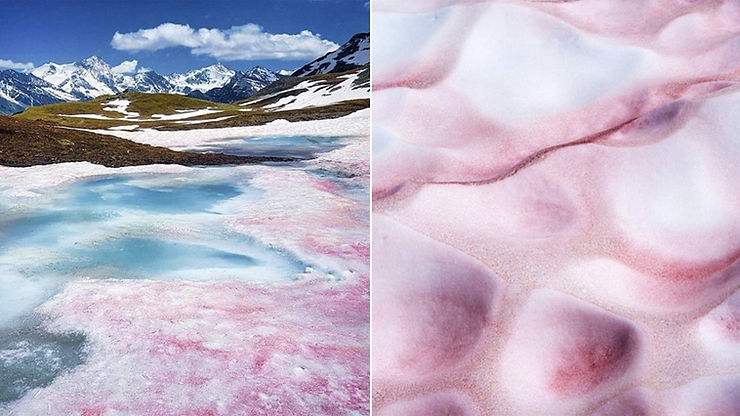By: Roya Li
If you have been hiking Yosemite’s high country recently and noticed the snow is pink, you don’t need a new eyeglass prescription. Today, in Utah, somebody found the most beautiful snow, watermelon snow. If you step on it, the pink color will slowly turn into red.
Watermelon snow, also known as snow algae, powder snow, red snow, or blood snow, is a phenomenon caused by Chlamydomonas Chlamydomonas, a species of green algae that contains a secondary red carotenoid in addition to chlorophyll.
This type of snow is common in alpine and coastal polar regions around the world during the summer, such as California’s Sierra Nevada. The altitude here is 10,000 to 12,000 feet, and the temperature is cold year-round, so the snow from winter storms is always lingering.
Snow algae dominate glacier biomass immediately after melting, and their pigmentation can significantly darken glacier surfaces. This plays an important role in the melting of glaciers, since darker surfaces absorb more sunlight.
If hikers like to climb watermelon snow mountain, they need sun cream to protect their body, because the snow is the most reflective nature surface on the planet.











